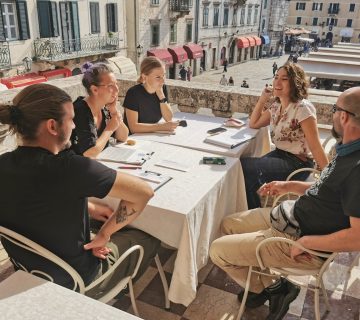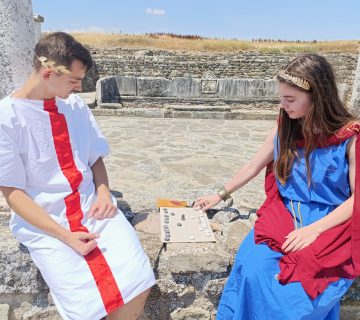Everyone loves to eat! But how do we interpret the story of food – its history, connection to culture and people, of growing and/or its appeal?
This spring, IE’s Gastronomic Heritage Team hosted one of the online Thematic tables to help attendees think about their own experiences with food and explore methods of interpreting food.
Using all five senses (smell, taste, sight, sound and touch) as a means to focus our experiences, the attendees chose to join a small breakout group and discussed how they have seen the stories of food interpreted, or talked about their own personal experience. What did we discover?
Smell is a key sense when food is a focus. Research shows that smells bring back vivid memories faster than any of the other senses. Sometimes smells are evident and obvious (especially if it’s odorous). But sometimes visitors might need to be prompted to identify a smell. “What do you smell right now? What does it remind you of?” – might be questions we’d need to ask our guests as a prompt for them to talk about their experiences and make a connection to their present location.
Taste is a favourite sense when interpreting food. What can we do during a walk, talk or tour to safely engage our guests? If on a tour where the smells of food are making mouths water, is there a way to get a sample of what is cooking? It helps to know the chef or shopkeeper at a locale you will be passing to connect with your guests via a short chat or – better still – a tasty sample. You will provide a memorable connection for your guests, your guests will get a sample of something delicious, and the restaurant or shop might get some business later. A win for all!
We know that smell and taste might be the easier senses to access for telling the many stories of food. But what about sight, sound or touch? How do we make a connection to food using these senses? Think about the views your guests might have on a walk, talk or tour that focus directly on the food you are interpreting. Ensure your guests can see the action of food preparation at a market, the tossing of fish from a boat or the “dance” an expressive chef makes when he or she has an audience.
What sounds does food make? What sound does a ripe watermelon make at the produce stand? Would your guests know? Think about the sounds of olives shaken off a tree or the songs sung by winery workers as they process the grapes. The food is not making a sound but the sound is associated with the food. As a good interpreter, it’s your role to alert your guests to these sounds for them to make connections.
And touch? If you have a group in an agricultural area, it is easier to get guests to touch something that makes a connection to the actual plant, grain, fruit or vegetable (the firmness of a melon, for example). But in a market, asking a stall owner about the ripeness of their product might solicit an invitation to touch that a guest might be reluctant to ask for if they were on their own.
The Gastronomic Heritage Team hopes to gather more ideas about interpreting food and develop a set of powerful practices to support you in the interpretation of food. Stay tuned!
Chuck Lennox, owner of Lennox Insites (www.lennoxinsites.com), is a visitor experience consultant based in Seattle, WA (USA). You can reach him at: chuck@lennoxinsites.com.
To cite this article: Lennox, Chuck(2021) ‘ Interpreting food with your guests’ in Interpret Europe Newsletter 2-2021, 10.
Available online: https://interpret-europe.net/wp-content/uploads/2021/06/Newsletter-Summer-2021.pdf




